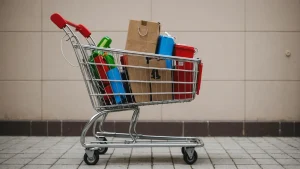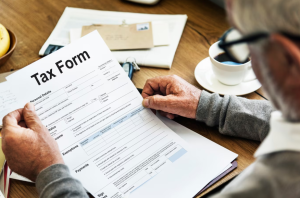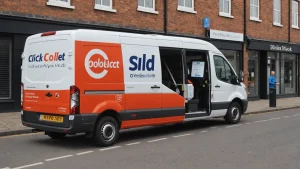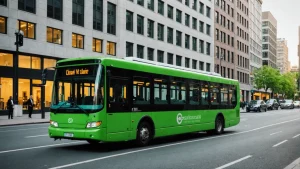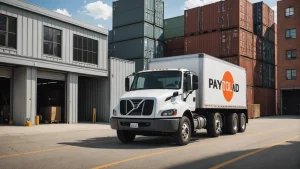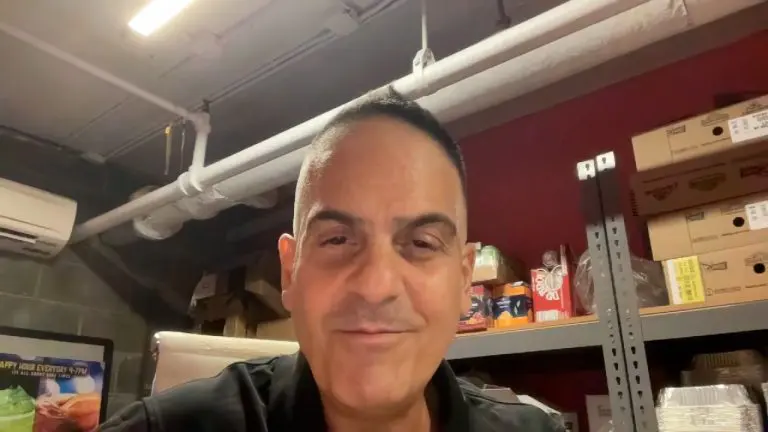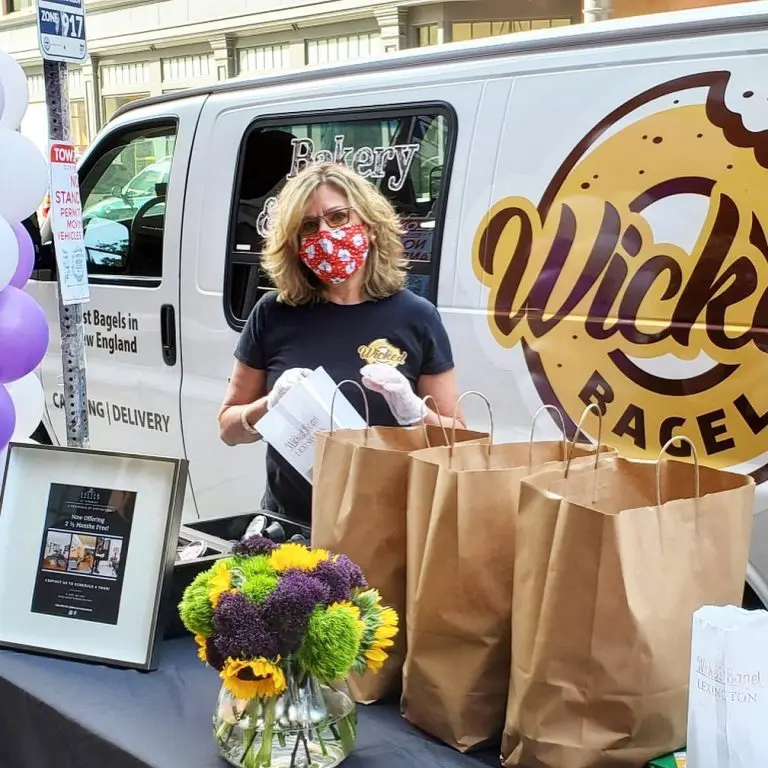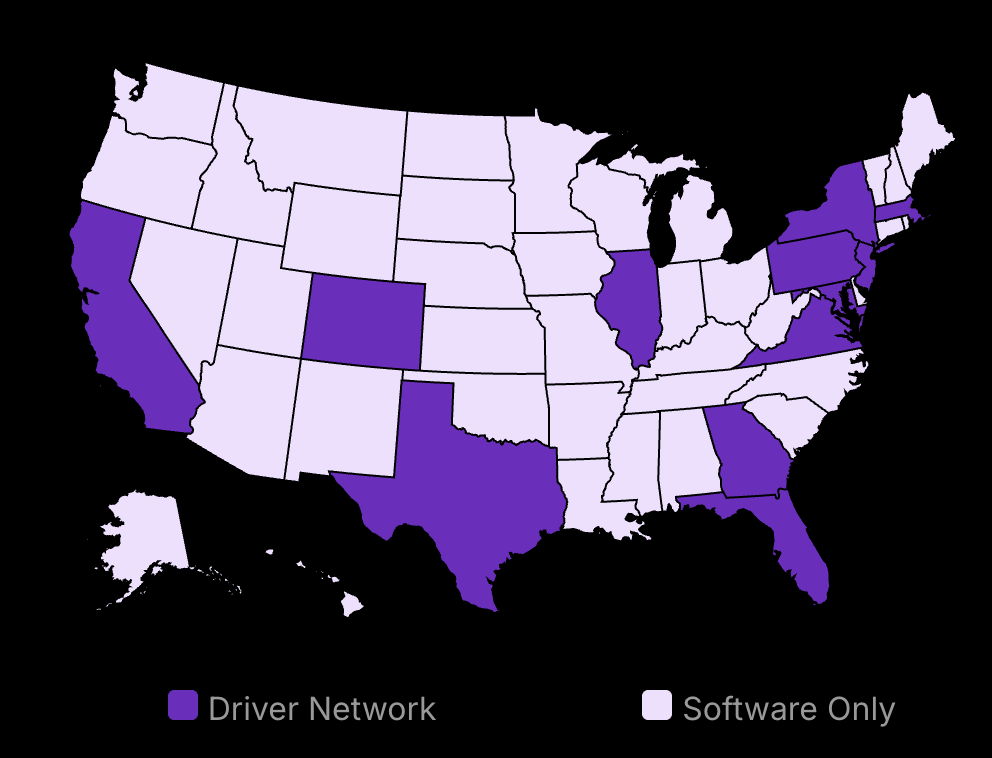Cart abandonment is a persistent challenge for eCommerce businesses, with customers frequently leaving items in their online shopping cart without completing the purchase. Discover strategies to combat shopping cart abandonment and minimize its impact on your eCommerce revenue.
Whether due to unexpected shipping costs, distractions, or simply indecision, abandoned carts lead to significant lost revenue. However, with a well-executed cart abandonment email strategy, businesses can recover lost sales and nudge potential buyers back to complete their purchase. By crafting abandoned cart emails that include compelling subject lines, personalized content, and timely follow-ups, online stores can reduce cart abandonment rates and improve their overall customer journey. Boost your revenue by adopting strategies to lower cart abandonment and encourage customers to finalize their purchases.
In this article, we’ll explore some of the most successful abandoned cart email examples and dive into proven strategies to help you recover lost customers. From email templates to optimal timing in your abandoned cart email sequence, we’ll cover everything you need to know to create an effective abandoned cart email campaign. Let’s get started on your path to recovering lost revenue and keeping those shopping carts full.
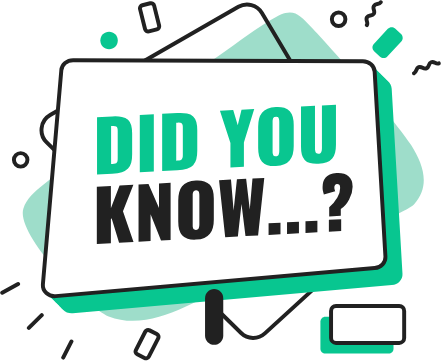
27% higher customer satisfaction
Professional delivery features:
- Real-time GPS tracking
- Automated ETA updates
- Delivery confirmation photos
- 27% higher delivery satisfaction
What Are Abandoned Cart Emails and Why They Matter?
Abandoned cart emails are a crucial element of any eCommerce business’s cart abandonment email strategy. When potential buyers leave items in their shopping cart without completing their purchase, these emails are triggered to remind them about their unpurchased products and entice them to return. The importance of these emails lies in their ability to recover lost sales, turning abandoned carts into revenue. With effective subject lines, well-timed follow-up messages, and compelling copy, abandoned cart emails can help recapture lost customers and guide them back to the checkout page.
Abandoned carts represent significant lost sales for online stores, but by sending targeted recovery emails, businesses can re-engage cart abandoners and address common hesitations, like unexpected shipping costs or product concerns. Whether by offering free shipping, a coupon code, or providing helpful customer support, abandoned cart emails build a direct path to converting potential buyers who were on the verge of making a purchase. Learn how shopping cart abandonment impacts your e-commerce revenue and the strategic moves to counteract it.

Best Abandoned Cart Email Templates for Your Business
Having effective abandoned cart email templates is essential for a strong email marketing strategy. These templates should be tailored to address the customer’s specific behavior and guide them toward completing their purchase. Whether you’re offering free shipping, showcasing a discount code, or highlighting product reviews as social proof, each abandoned cart email template should be designed to fit the customer journey and motivate them to revisit their cart.
Your templates can range from gentle reminders to more direct nudges, depending on where the customer is in the sales funnel. For example, an initial abandoned cart email might include a friendly reminder of the products left behind, while a follow-up email could offer a coupon code or highlight potential price drops. Using mobile-responsive designs and clear calls to action ensures that your templates work seamlessly across devices and help recover lost customers.
Creating an Effective Abandoned Cart Email Sequence
An abandoned cart email sequence is a powerful way to ensure consistent engagement with customers who abandon their online shopping cart. Rather than relying on a single email, a well-planned sequence consists of multiple touchpoints designed to re-engage the customer at different stages of the abandonment process.
A typical sequence might start with an immediate reminder a few hours after the cart abandonment, offering a friendly reminder about the items in their cart. The second email, sent after a day or two, might include a discount code or free shipping to address common barriers like unexpected shipping costs. The final email in the sequence can create a sense of urgency by reminding customers that items may sell out or that a discount code is expiring soon.
This multi-step approach helps recover lost sales by keeping your store at the top of the customer’s mind and providing multiple opportunities to complete their purchase. Automating this sequence using email marketing tools ensures that you can recover abandoned carts efficiently without manual intervention.
17 Best Abandoned Cart Email Examples To Win Back Customers
1. Casper
Subject Line: “Did you forget something?”

Casper uses a playful and casual tone to remind customers that they’ve left something behind. The email opens with an eye-catching question, making it feel lighthearted and personal. To reinforce trust, Casper includes real customer testimonials, providing social proof that encourages hesitant buyers to return to their carts. The email design is sleek, with visuals that showcase Casper’s comfortable mattresses and bedding, tempting customers to revisit their cart and complete their purchase.
What they are doing right:
Lighthearted, conversational subject line grabs attention.
Incorporates social proof through testimonials to build trust.
Clean, visual-driven design that puts the product front and center.
Clear and compelling CTA that nudges users back to their cart.
What We Like
Casper’s playful and engaging tone paired with well-placed customer testimonials creates a seamless connection with potential buyers, making the abandoned cart email more relatable and persuasive. The clean layout and visuals ensure that the message is easy to digest, motivating customers to complete their purchase.
2. Whisky Loot
Subject Line: “Your cart is sobering up”

Whisky Loot delivers a masterclass in witty email marketing with a subject line that immediately stands out. Instead of the typical abandoned cart reminder, this email entertains while it informs. The playful tone throughout the email keeps the customer engaged while also emphasizing the urgency of completing their purchase before it’s too late. Whisky Loot doesn’t bombard the customer with information, but rather provides just enough details about the items in the cart and the experience they’re about to miss out on. The email keeps things light yet persuasive, proving that humor can be a powerful driver of conversions.
What they are doing right:
Clever, humor-driven subject line that stands out in the inbox.
Balances humor with urgency, motivating customers to act.
Simple product details included to reduce hesitation at the checkout.
Strong call to action with a sense of urgency to recover lost sales.
What We Like
Whisky Loot’s use of humor is highly effective in capturing attention while maintaining a focus on converting potential buyers. The subject line is memorable, and the overall tone of the email keeps it fun yet purposeful, creating a sense of urgency that helps drive customers back to their cart.
3. Target
Subject Line: “The price dropped for something in your cart”

Target’s abandoned cart email is designed to appeal to deal-seekers, offering a price drop notification for items left behind. This strategy taps into customers’ desire for savings, creating a sense of urgency to return and grab the discounted items before they’re gone. Target further enhances the email by including recommendations for similar products, giving customers additional options and increasing the likelihood of recovering lost sales.
What they are doing right:
Leveraging price drop notifications to attract bargain-hunters.
Creates urgency by emphasizing that the deal is temporary.
Suggests alternative products, enhancing the shopping experience.
Clear, bold CTA to motivate customers to complete checkout.
What We Like
Target’s smart use of price drops to recover abandoned carts is a winning strategy for any eCommerce business. By pairing the price reduction with personalized product recommendations, they not only recover lost sales but also engage the customer in a broader shopping experience, keeping them interested even if the original item doesn’t work out.
4. Beauty Bay
Subject Line: “We’ve saved your bag”

Beauty Bay takes a bold, stylish approach with their abandoned cart email, using vibrant colors and sleek design to recapture the attention of their customers. The message is simple but powerful: your items are still here, but they won’t be forever. This subtle implication of scarcity drives urgency without needing to over-explain. Beauty Bay’s email places heavy emphasis on the visual appeal of the products, drawing the customer back with the same aesthetics that likely caught their attention in the first place. It’s an elegant reminder, designed to be both eye-catching and effective.
What they are doing right:
Creates urgency with the suggestion that the saved items won’t be available for long.
Strong visual design that captures attention and keeps the focus on the products.
Clear, straightforward messaging that avoids overwhelming the customer.
Bold, easy-to-spot CTA that directs the customer back to their cart.
What We Like
Beauty Bay’s sleek, minimalist design paired with a strong sense of urgency makes this email highly effective. It’s visually appealing without being overdone, and the simplicity of the message keeps the focus where it belongs—on encouraging the customer to complete their purchase.
5. Allbirds
Subject Line: “Your Cart Is Waiting”

Allbirds keeps things simple yet reassuring in their abandoned cart email, reminding customers that their cart is patiently waiting for them. What sets this email apart is the way it emphasizes Allbirds’ flexible return policies, providing a sense of security for shoppers who may be on the fence. It’s an effective nudge for those still hesitating, as the email doesn’t just focus on selling—it also addresses potential concerns about purchasing. This combination of gentle persuasion and practical reassurance helps build customer confidence.
What they are doing right:
Emphasizes flexible return policies to reduce purchase anxiety.
Simple, clear language that reassures customers without being pushy.
Strong focus on customer satisfaction, offering peace of mind.
Clear and simple CTA that encourages completion of checkout.
What We Like
Allbirds’ approach is both calm and effective. By reminding customers of their flexible return policy, they remove the hesitation customers might feel about making the purchase. This email excels at using a non-aggressive strategy to recover lost sales while maintaining the brand’s friendly, eco-conscious image.
6. Peel
Subject Line: “Still Thinking it Over?”

Peel’s email is the perfect mix of subtlety and incentive. By acknowledging the customer’s indecision in the subject line, Peel shows an understanding of the buying process without being forceful. The offer of free shipping becomes the real motivator, tipping the scales in the customer’s favor and reducing friction at the checkout. The design is minimal and product-focused, ensuring that customers are reminded of the sleek, high-quality phone cases they left behind. With a solid offer and a gentle push, Peel’s email encourages the customer to complete the purchase.
What they are doing right:
Acknowledges customer hesitation, creating a relatable tone.
Free shipping offer eliminates one of the most common barriers to completing a purchase.
Minimal design keeps focus on the product, avoiding distractions.
Effective use of a soft, persuasive nudge in the subject line.
What We Like
Peel’s understanding of customer hesitation, paired with a compelling free shipping offer, creates a strong formula for driving conversions. The minimal design feels true to their brand, keeping the experience smooth and focused on the product itself, helping to close the deal with ease.
7. Nomad
Subject Line: “Nomad Gear is Selling Out Quick”

Nomad leans into a classic marketing tactic—creating FOMO (fear of missing out). By informing customers that their desired gear is selling out fast, this abandoned cart email adds urgency in an exciting, engaging way. The tone remains friendly yet urgent, and Nomad reassures customers by mentioning their hassle-free return policies. The email design is clean and concise, ensuring customers focus on the urgency of their potential loss while feeling confident in making the purchase. The combination of FOMO and reassurance makes this email a strong motivator for action.
What they are doing right:
Creates a sense of urgency through FOMO, urging customers to act quickly.
Reassures customers with information about return policies, reducing risk.
Clean, concise design keeps focus on the key message: limited availability.
Friendly, engaging tone that doesn’t overwhelm the customer.
What We Like
Nomad’s use of urgency, combined with their reassurance about returns, makes for a powerful abandoned cart email. It encourages immediate action without leaving the customer feeling pressured, striking the perfect balance between urgency and trust-building.
8. Design Milk
Subject Line: “Forget something in your Design Milk cart?”

Design Milk uses a friendly, conversational tone to re-engage customers. The subject line feels like a gentle reminder from a friend, which fits perfectly with their design-conscious audience. The email’s simplicity makes it effective, using minimal text and letting the products speak for themselves. With a sleek design that mirrors their modern aesthetic, Design Milk keeps the email easy to read and visually appealing. The tone of the email feels understanding, giving customers a stress-free way to pick up where they left off.
What they are doing right:
Friendly, conversational tone that feels personal.
Simple, minimalist design that appeals to their design-savvy audience.
No overwhelming text—focus remains on the products left behind.
Clear CTA for easy navigation back to the cart.
What We Like
Design Milk’s approachable, understanding tone makes this abandoned cart email feel like a friendly nudge. The clean and simple design keeps the customer focused on the product, creating an easy and enjoyable path back to completing their purchase.
9. Rudy’s Barbershop
Subject Line: “Don’t let free shipping go to waste”

Rudy’s Barbershop effectively taps into the customer’s fear of missing out by promoting free shipping in their abandoned cart email. The subject line immediately grabs attention, making it clear that the offer is time-sensitive. The email is designed to feel personal and direct, reminding customers of the grooming products left in their carts. By highlighting the value of free shipping, Rudy’s Barbershop not only encourages completion of the purchase but also fosters a sense of urgency. The overall design is clean and engaging, with a clear call to action that guides customers back to their carts seamlessly.
What they are doing right:
Emphasizes free shipping as a key incentive, creating urgency to complete the purchase.
Personal and direct tone that makes the email feel friendly and inviting.
Clear visuals that keep the focus on the abandoned items and the offer.
Strong CTA that facilitates easy navigation back to the cart.
What We Like
Rudy’s Barbershop’s email strikes a perfect balance between urgency and personalization. By focusing on the valuable offer of free shipping, they effectively motivate customers to return to their carts and complete their purchases, making the experience feel rewarding.
10. Huckberry
Subject Line: “You’re missing out on adventure gear!”

Huckberry taps into their customers’ passion for the outdoors with an adventurous, energetic email that makes it hard to resist. The subject line, paired with product visuals, evokes a sense of excitement and urgency, reminding customers of the outdoor gear they’re about to miss out on. Huckberry’s abandoned cart email is highly targeted, speaking directly to the lifestyle their customers love, making it more than just about recovering a lost sale—it’s about helping the customer reconnect with their passion.
What they are doing right:
Tailors the message to customers’ interests, making it feel relevant and personal.
Evokes a sense of adventure and excitement, encouraging immediate action.
Strong visuals that complement the adventurous tone and product offering.
Clear, compelling CTA that drives urgency.
What We Like
Huckberry’s email excels at speaking to the heart of its audience by using a tone that’s both adventurous and persuasive. It reminds customers that they’re not just leaving gear behind—they’re leaving their next adventure behind too, making the email highly effective in recovering lost revenue.
11. Lime Crime
Subject Line: “Your cart is waiting for you!”

Lime Crime’s abandoned cart email is designed to hit the customer at just the right moment by including a coupon code. The subject line feels welcoming, with a soft tone that reassures customers that their cart hasn’t gone anywhere. What makes this email stand out is the perfectly timed coupon code, which adds a financial incentive for customers to complete their purchase. With bold, fun graphics and a clear CTA, Lime Crime knows how to use both design and strategy to motivate customers back to the checkout page.
What they are doing right:
Offers a coupon code to add an incentive for completing the purchase.
Welcoming tone that reassures customers their cart is still there.
Bright, fun graphics that align with their brand’s bold aesthetic.
Clear, bold CTA to encourage cart recovery.
What We Like
Lime Crime nails it with a blend of fun, colorful design and a perfectly placed coupon code. The email makes it easy for customers to return to their cart, and the added financial incentive gives them the final push they need to complete their purchase.
12. Food52
Subject Line: “Did you forget something delicious?”

Food52 cleverly entices customers back to their carts by appealing to their senses and emotions. The subject line is not just a reminder; it evokes the delicious possibilities that await them. The email features mouth-watering imagery alongside the abandoned items, helping customers visualize the products they left behind. By highlighting the joy of cooking and entertaining, Food52 makes the case that completing their purchase will enhance their culinary experiences. The overall design is inviting and emphasizes the products’ appeal, creating a strong emotional connection that motivates the customer to return.
What they are doing right:
Uses appetizing visuals that evoke desire and excitement.
Creates an emotional appeal by linking products to enjoyable experiences.
Gentle reminder that doesn’t feel pushy, maintaining a warm tone.
Clear CTA that invites customers to complete their purchase seamlessly.
What We Like
Food52’s email stands out by marrying enticing visuals with an emotional narrative. By making customers feel that they’re missing out on something delicious and enjoyable, they not only encourage cart recovery but also foster a deeper connection with their brand.
13. ThredUP
Subject Line: “Your cart is feeling lonely!”

ThredUP infuses personality into their abandoned cart email with a playful subject line that anthropomorphizes the customer’s cart. By addressing the cart’s “loneliness,” ThredUP strikes a humorous tone that softens the usual sales pitch. The email is visually engaging and filled with friendly language, making the reminder feel less like a pressure tactic and more like a light-hearted nudge from a friend. This approach helps customers feel more connected to their shopping experience and encourages them to revisit their carts without feeling overwhelmed.
What they are doing right:
-
Uses humor to create a lighthearted connection with the customer.
-
Friendly language that makes the email feel personal and inviting.
-
Engaging visuals that enhance the overall experience.
-
Clear CTA that encourages customers to return to their carts without pressure.
What We Like
ThredUP’s playful and personable approach makes this abandoned cart email feel fresh and engaging. By using humor and friendly language, they create a positive association with the shopping experience, making it more likely for customers to return to their carts.
14. Brooklinen
Subject Line: “Don’t miss out on cozy sheets!”

Brooklinen emphasizes comfort and coziness in their abandoned cart email, making it hard for customers to resist the allure of their high-quality bedding. The subject line captures attention immediately, speaking directly to the desire for comfort that many shoppers seek. By showcasing customer reviews prominently, Brooklinen adds an element of social proof that reassures potential buyers about the quality of their products. The clean, sophisticated design aligns perfectly with their brand image, making the email visually appealing while effectively guiding customers back to complete their purchase.
What they are doing right:
Highlights customer reviews to build trust through social proof.
Focuses on the emotional appeal of comfort and relaxation.
Clean, elegant design that enhances brand identity.
Direct CTA that makes it easy to return to the cart.
What We Like
Brooklinen’s ability to evoke feelings of comfort and reassurance makes their abandoned cart email stand out. By leveraging social proof and maintaining a sophisticated aesthetic, they effectively encourage customers to return and experience the quality for themselves.
15. SugarBearHair
Subject Line: “Your hair will thank you!”

SugarBearHair strikes a chord with customers by reminding them of the benefits they can reap from completing their purchase. The subject line taps into the desire for beauty and self-care, making it clear that leaving their cart behind means missing out on something valuable. The email features catchy graphics and simple messaging that focuses on the benefits of their products, making the decision to return to the cart feel straightforward and appealing. The tone remains upbeat and friendly, encouraging customers to complete their purchase in a positive light.
What they are doing right:
Emphasizes the benefits of their products, appealing to customer desires.
Upbeat and friendly tone that fosters a sense of community.
Engaging graphics that capture attention without overwhelming.
Clear, concise CTA that makes it easy to return to the cart.
What We Like
SugarBearHair effectively combines a sense of community with a focus on benefits in their abandoned cart email. The catchy graphics and upbeat messaging make for an engaging experience that invites customers to revisit their carts and feel good about their choices.
16. Moosend
Subject Line: “Oops! You forgot something.”

Moosend’s abandoned cart email embraces a friendly reminder approach, using a playful subject line that feels like a gentle nudge. The email’s design is engaging and highlights the abandoned items in a way that makes them hard to overlook. By using a friendly tone and straightforward language, Moosend ensures that customers feel at ease while being reminded of their incomplete purchases. The email includes clear links back to the cart, facilitating a smooth transition for customers looking to finalize their orders.
What they are doing right:
Friendly, relatable subject line that feels non-intrusive.
Engaging design that keeps the focus on the products.
Clear, straightforward messaging that avoids overwhelming customers.
Easy-to-find links that guide customers back to their cart.
What We Like
Moosend’s approach to the abandoned cart email feels light and friendly, creating a welcoming environment for customers to return to their carts. Their focus on simplicity and ease of navigation enhances the overall customer experience, making it more likely for them to complete their purchase.
17. Haoma
Subject Line: “Any questions?”

Haoma takes a unique and thoughtful approach to their abandoned cart email by offering help rather than pushing for an immediate sale. The subject line is a gentle invitation, letting customers know they are there to assist with any lingering concerns or hesitations about their purchase. This builds trust and shows that Haoma values customer satisfaction over a hard sell. The email design is clean and minimalist, focusing on the abandoned items and offering multiple ways to get in touch, including links to FAQs or customer service. This personalized touch reassures customers that their questions will be answered before they commit to completing their purchase.
What they are doing right:
Provides a customer-centric approach by focusing on answering questions rather than pushing the sale.
Builds trust by offering assistance, which reduces purchase hesitation.
Clear, minimalist design that keeps the focus on the customer’s cart and options to seek help.
Easy-to-find links to FAQs or customer service, facilitating a seamless customer journey.
What We Like
Haoma’s approach to cart recovery is refreshingly focused on the customer’s needs. By opening the conversation and offering help, they create an inviting experience that reassures hesitant shoppers and builds trust. It’s a gentle yet effective strategy for encouraging cart recovery without being aggressive.
Abandoned Cart Email Best Practices: How to Boost Your Recovery Rates
Crafting a high-performing abandoned cart email requires strategic planning to maximize open rates, boost click-through rates, and ultimately recover lost revenue. Below is a breakdown of the most effective strategies to enhance your abandoned cart email performance:
1. Compelling Subject Lines
The subject line is the first and most important part of your cart abandonment email. It’s the gateway to getting your customers to open the email in the first place. To grab attention, your subject line should be clear, engaging, and resonate with the customer’s experience. Personalization works well—try using the customer’s name or referencing the exact items they left behind. This helps the email feel more personal and tailored to them.

Phrases that create a sense of urgency or curiosity can also help increase open rates. For example, “You left something behind!” or “Still thinking it over?” are gentle nudges, while more urgent subject lines like “Your cart is almost gone!” or “Discount ends soon!” tap into the fear of missing out (FOMO). The key is to use a friendly, inviting tone that encourages the recipient to take action without being too pushy.
Also, testing subject lines is a valuable step—using A/B testing can help determine which types of subject lines work best for your audience.
2. Timing is Key
The timing of your abandoned cart emails plays a huge role in their effectiveness. Ideally, the first email should be sent within a few hours after the cart is abandoned. Research shows that striking while the iron is hot—when the customer still remembers their abandoned cart—leads to higher recovery rates. Waiting too long can cause customers to lose interest or forget about their potential purchase entirely.
A well-structured email sequence should include follow-up messages spaced out over a few days. For instance:
Email 1: Sent within a few hours as a gentle reminder of the items left behind.
Email 2: Sent 24-48 hours later, offering an incentive like a discount code or free shipping.
Email 3: Sent after 72 hours, with an urgency-driven message like limited stock or expiring offers.
This sequence ensures multiple touchpoints with the customer, increasing the chances of recovering lost sales without overwhelming them with too many emails.
3. Personalized and Relevant Content
Customers respond best when emails feel personal and relevant to their interests. Your abandoned cart email should include details about the items left in their cart, creating a direct connection to the products they showed interest in. By referencing the specific products left behind, you remind the customer of what drew them to your store in the first place.
You can take personalization further by offering product recommendations based on their shopping behavior, or by highlighting reviews and social proof. Incorporating customer testimonials or ratings from others who have purchased the same items can increase trust and confidence in the purchase. If the customer was hesitant due to uncertainty about the product, these personalized touches can make a big difference in their decision-making process.
4. Offer Incentives
One of the most effective ways to win back lost customers is by offering an incentive. Common incentives include:
Free Shipping: High shipping costs are a top reason for cart abandonment, so offering free shipping can remove that barrier.
Discount Codes: A small discount, like 10% off, can be enough to encourage a customer to complete their purchase.
Price Drop Alerts: If the price of an item in the cart has dropped, notifying the customer can trigger a sense of value and urgency.

It’s important to balance offering incentives with profitability. You don’t want to give away discounts on every sale, but offering one-time deals for high-value customers or those on the verge of purchasing can significantly boost conversions.
5. Clear and Strong Call to Action
The call to action (CTA) is the pivotal moment in any email—it’s the step that pushes the customer toward completing their purchase. Your CTA should be bold, easy to find, and direct. Use action-driven language like “Complete your purchase” or “Return to your cart” so the customer knows exactly what to do.
Make sure the CTA is visually prominent—whether it’s a button or a link—so it stands out from the rest of the content. It should be clickable and guide the customer directly back to their cart or the checkout page with as little friction as possible.
6. Mobile Optimization
With a growing percentage of shoppers browsing and purchasing via mobile devices, ensuring your abandoned cart emails are optimized for mobile is essential. A responsive design means that images, text, buttons, and overall layout adjust automatically to different screen sizes.
Here are a few best practices for mobile optimization:
Keep Subject Lines Short: Since mobile screens display fewer characters, concise subject lines are crucial.
Large Buttons: Ensure the CTA button is large enough for easy tapping, with sufficient space around it.
Minimal Load Times: Images should load quickly, and the email’s structure should remain intact without forcing customers to zoom in.
By designing with mobile in mind, you ensure that all customers—whether browsing on a desktop, smartphone, or tablet—have a seamless experience.
7. Create a Sense of Urgency
Creating urgency can significantly boost the effectiveness of your abandoned cart emails. Letting customers know that items may sell out or that a discount code is expiring soon can push them to act quickly. Using phrases like “Only a few items left!” or “Offer ends tonight!” encourages customers to complete their purchase before missing out on the deal.

Urgency doesn’t have to feel aggressive; it can be framed as a helpful reminder or a value-adding incentive, giving customers an extra nudge to act now rather than later.
8. Multiple Links and Easy Navigation
Including multiple links back to the shopping cart throughout your email can make it easier for customers to complete their purchase. These links should be placed in the email body, product images, and CTA buttons. The easier it is for a customer to navigate back to their cart, the higher the likelihood they’ll complete the checkout process.
Each link should lead directly to the checkout page or the abandoned cart, reducing friction in the customer journey and simplifying the process of finalizing their order.
Mastering Your Cart Abandonment Email Strategy
Implementing an effective abandoned cart email strategy can significantly reduce lost sales and improve your conversion rates. By incorporating practices such as compelling subject lines, timely follow-up messages, offering free shipping, and creating a sense of urgency, you can recover abandoned carts and retain customers. Don’t forget to leverage email marketing tools and automate your abandoned cart email campaigns to maximize efficiency and reach customers when it matters most.
Abandoned cart emails are more than just a reminder—they’re a powerful tool to drive conversions, increase engagement, and enhance the customer journey. With the right approach, you’ll motivate your cart abandoners to return to their online shopping cart, complete checkout, and ultimately become loyal customers.






